"The one absolutely unselfish friend that humans can have in this selfish world, the one that never deserts them, the one that never proves ungrateful or treacherous is their dog."
~George Graham Vest, Senator of Missouri, 1855
Table of Contents

Introduction
Wild Dogs and Phylogeny
The Domestication of Dogs
Breeds of Dogs
Behaviour
Communication
The Dog Genome
Man's Best Friend, Why?
Dogs in Society
Quiz
Commemoration
Introduction
Dogs. We all know what they are, and most people have lived with them as pets or seen them about in communities. But how much do we really know about them? The above quotation is believed to be the origin of the colloquial adage ‘Man’s Best Friend.’ The truth to the adage is recognized, as dogs remain among the most popular pets in the world. This treehouse provides information about many aspects of domestic dogs, to learn more about them, what they are capable of, and where they come from and to try to find an answer to the question ‘why are dogs man's best friends?’
Wild Dogs and Phylogeny
Domestic dogs, wild dogs, and wolves all belong to the Family Canidae, which also contains jackals, coyotes, and foxes. Canidae is contained within the group caniformia which is contained within the Order Carnivora, one of the eighteen current groups of Eutherians, or placental mammals. A full list of the groups contained in Canidae is provided below.
Within the Canidae are 14 groups, or genera. Contained within those 14 genera are at least 34 species and two subspecies (a chart showing all members in the Canidae is provided below). The genus Canis contains dogs, jackals, and wolves. The gray wolf, Canis lupus, is among 7 species of canids and also related to two subspecies, Canis lupus dingo and Canis lupus familiaris, which are known commonly as the dingo and the domestic dog, respectively.
Containing Groups for Canidae
Eutheria, Mammalia , Therapsida, Synapsida , Amniota, Terrestrial Vertebrates, Sarcopterygii, Gnathostomata, Vertebrata, Craniata, Chordata , Deuterostomia, Bilateria , Animals, Eukaryotes, Life on Earth
Canidae | ||
| Subgroups
| ‘Species’
| ‘Subspecies’
|
| Alopex Arctic fox
| Alopex lagopus Arctic fox |
|
| Atelocynus short-eared dog
| Atelocynus microtis short-eared dog |
|
| Canis dogs, jackals, and wolves | Canis adustus side-striped jackal Canis aureus golden jackal Canis latrans coyote Canis lupus gray wolf Canis mesomelas black-backed jackal Canis rufus red wolf Canis simensis Simian jackal | Canis lupus dingo dingo |
| Cerdocyon crab-eating fox | Cerdocyon thous crab-eating fox |
|
| Chrysocyon maned wolf | Chrysocyon brachyurus maned wolf |
|
| Cuon dhole | Cuon alpinus dhole |
|
| Dusicyon Falkland Island wolf | Dusicyon australis Falkland Island wolf |
|
| Lycaon African wild dog | Lycaon pictus African wild dog |
|
| Nyctereutes raccoon dog | Nyctereutes procyonoides raccoon dog |
|
| Otocyon bat-eared fox | Otocyon megalotis bat-eared fox |
|
| Pseudalopex South American foxes
| Pseudalopex culpaeus culpeo Pseudalopex griseus Argentine gray fox Pseudalopex gymnocercus pampas fox Pseudalopex sechurae Sechura fox Pseudalopex vetulus hoary fox |
|
| Speothos bush dog | Speothos venaticus bush dog |
|
| Urocyon gray foxes | Urocyon cinereoargenteus gray fox Urocyon littoralis island gray fox |
|
| Vulpes foxes | Vulpes bengalensis Bengal fox Vulpes cana Blandford's fox Vulpes chama Cape fox Vulpes corsac Corsac fox Vulpes ferrilata Tibetan fox Vulpes pallida pale fox Vulpes rueppellii Rüppel's fox Vulpes velox swift fox Vulpes vulpes red fox Vulpes zerda fennec | |
The Domestication of Dogs
One ancestor too many breeds
- Humans have historically desired certain traits in their pets and, therefore, have produced by artificial selection the vast variety of dog breeds
- Artificial selection has given rise to breeds spanning everything from pocket-sized Chihuahuas to 100 kilo Saint Bernards
- Dogs of many sizes and shapes appear in archaeological and artistic records of almost all cultures, dating to thousands of years ago
- Dogs have been specialized for a variety of purposes, from hunting, herding, protection, and companionship, to esthetics
- Almost 400 dog breeds have been established since 1850
- This radiation is a testament to the popularity of purebred pets as status symbols, specialized breeding, and dog shows
Breeds of Dogs

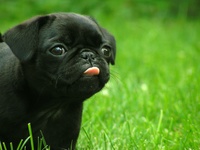
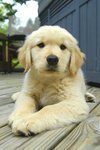

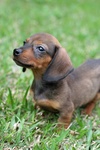
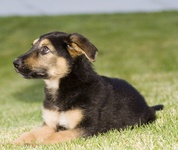
Puppies of different dogs breeds. Pug © 2006 Evan Agee. Golden Retriever © 2006 Robert Dann. Boxer © 2007 Cynr. Dachshund © 2007 mms0131. German Shepherd © 2006 Joe Nicora. Puppy images licensed under creative commons. Click on an image for license details.
Dog Diversity depends on three key factors
- Three processes are involved in the rapid evolution of dog breeds
- Systematic selection
- involves carefully selecting certain dogs for inherited traits like body type, coat characteristics, speed, herding, hunting, endurance, and size
- over time and from breeders’ choices, produce animals with distinctive looks and abilities
- has yielded, for example, the saluki, basenji, and greyhound
- Sports (a term that Charles Darwin used for macromutations)
- refers to puppies with unusual traits, such as hairlessness or lack of a tail
- includes individuals with the mutation for achondroplasic dwarfism that causes limbs to stop growing prematurely, resulting in short limbed breeds like dachshunds and basset hounds
- mutations generally don’t help dogs survive in the wild, but they can yield dogs with exotic looks that appeal to breeders
- Cross-Breeding
- produces new forms by crossing two breeds that differ in appearance or behavior
- usually is followed by selective breeding of offspring
- unleash a lot of genetic variation – many shapes, sizes, and colors
- the first formal dog show held in 1859 in Newcastle, England presented an enormous array of dogs
- these shows since have become paramount for establishing bloodlines and breed standards
- standards describe the ideal height, weight, coat color and texture, ear type for individual breeds
- breed standards maintain the uniform appearance of pure bred dogs
- once established, the look of pure bred dogs won’t change much over time
- in contrast, wild species evolve constantly in response to changing natural conditions
- Labrador Retrievers, 137867 logged ownerships.
- Golden Retrievers, 48509 logged ownerships.
- Yorkshire Terriers, 47238 logged ownerships.
- German Shepherds, 45014 logged ownerships.
- Beagles, 42592 logged ownerships.
- primarily flesh-eaters, but, as a group, they are more omnivorous than are most other carnivores
- most canids rely primarily on an acute sense of smell and hearing; in general, their vision is less well-developed than is vision in other carnivores
- they are adapted more for endurance than speed; most of their hunting involves a long chase, whereby they exhaust their prey
- when they catch their prey, they often bring them down by grabbing the back of the neck; smaller prey usually are killed by shaking and breaking the spine; larger prey usually are killed by biting the soft underbelly, resulting in disembowelment, blood loss, and shock
- all Canidae, whether solitary or social in nature, are territorial
- mating is accomplished by a temporary pair bond that is formed during the breeding season; the male might stay with the female and assist in providing food for the young
- litters usually are deserted at about 4-5 months of age
- after litters break up, individuals find their own territories as solitary hunters
- a permanent pair-bond is formed between males and females
- offspring will remain with parents until the following breeding season
- offspring usually are driven off and will disperse to find individual territories
- very infrequently, when food is particularly abundant, yearlings may be allowed to remain in their natal territory
- the social unit is a pack of mostly related individuals
- a strong leader-follower relationship exists between subordinate wolves and the alpha wolf, who acts as the primary decision-maker and settles disputes between others
- as the young mature, they usually stay with the pack and fill positions that are created by the death or departure of others
- if the pack becomes too large or food becomes too scarce, then the pack may split up and move into neighboring territories (if available)
- exhibit a wider spectrum of individual differences; some are more confident and aggressive and have better hunting instincts; many are more timid and inclined to learn from the behaviour of others
- exhibit greater proximity tolerance to each other
- are more likely to exhibit group-coordinated behaviors and play
- possess greater complexity in their visual and auditory cues and, consequently, can convey a greater range of expression; this is consistent with the closer proximity afforded by pack behavior
- tend to be more uniform in their behaviors; exhibit similar levels of confidence, aggression, and hunting skills
- exhibit lower proximity tolerance
- possess more-stereotyped visual and auditory cues; this is necessary because they are in close contact less often and require less ambiguity in their communication
- are more reliant on olfactory cues – as they are in close contact less often, olfactory cues can be left in areas and received much later; olfactory cues are relied upon greatly for territorial boundaries and mate acquisition
- animals that have been domesticated tend to live in large social groups; this is associated closely with a leader-follower tendency and greater proximity tolerance
- those exhibiting promiscuous sexual behavior are more likely to be able to reproduce in an artificial environment
- animals that include a greater range of environments in their territories are more able to adapt to human environments
- a flexible diet facilitates adaptation to food provided by humans; for example, prior to domestication, wild dogs would have been able to eat most refuse left by humans
- untamed domesticated animals tend to be relatively comfortable near humans and exhibit less substantial tendencies toward conflict
- live in packs ranging from 2 to 36 individuals (most contain 5 to 9)
- packs exhibit a very strong dominance hierarchy; the alpha male is the leader, but the alpha female also plays an important role in decision making
- rank in the pack determines mating success and feeding order
- packs are stationary in the spring and summer (during the breeding season) but nomadic in the fall and winter, in search for food sources; they often travel up to 300 km in a night
- hunt in packs for large prey and individually for small prey; they also scavenge for garbage, steal prey, and eat carrion
- behaviour in domestic animals rarely is studied from a scientific perspective, as selective breeding confounds information that researchers might learn
- domestic dogs behave similarly to gray wolves; when feral packs of dogs are found, they exhibit similar social tendencies
- natural and artificial selection have attenuated some behaviours and enhanced others; for example, Canis familiaris exhibits bite inhibition when presented with prey: they pick up prey with their teeth but are much less inclined to deliver a fatal bite
- different Canis familiaris breeds are selected to enhance specific behaviours; for example, terriers are selected to chase sheep whereas sheepdogs will guard them from predators
- scent marking (spraying)
- visual (body posture, eye contact … or lack thereof)
- vocal (barking and whining)
- social communication
- staring at offenders
- snarling or baring teeth
- displaying erect body posture, tilting ears forward (depending on the breed), piloerecting fur
- attacking (indicated by a crouching body posture with the ears laid back)
- lateral recumbancy, elevation of the hind limb, tucking the tail (passive)
- no eye contact, low tail but wagging between the legs (active)
- "Species could rely on common rules of communication that determine the structure of the signal” (Pongracz et al., 2005)
- “The individuals of different species could learn the meaning of [a] heterospecific signal” (Pongracz et al., 2005)
- when encountering a stranger
- when encountering a 'bad guy'
- when going for a walk
- when left alone
- when tantalized with a ball or favorite toy
- when playing
- listeners allotted high despair levels to ‘alone’ situations
- the highest aggressiveness levels were given to the ‘stranger’ and ‘bad-guy’ situations
- no relevant difference in categorization between the three groups of listeners was discerned – non-owners chose most of the same emotions and situations as did Mudi owners when categorizing a bark
- participants found that the dimensions of quick versus slow pulsating barks as well as the pitch of the bark (high or low) were important indicators for making happy versus sad distinctions – where quick pulsating barks indicate an aggressive situation
- this suggests that the capability to recognize basic emotions may be an ancient trait shared among animals
- understand the meaning of pointing gestures – in cases for finding food, etc.
- comprehend what a human can and cannot see, depending on the situation
- can understand gestures, such as looking in a specific direction or nodding at a desired object
- can make social inferences; for example, when an owner tells his or her dog to fetch something using a novel word, the dog returns with a novel toy instead of a familiar one
- Dogs evolved multiple times from Old World wolves, and their ability to read social behaviour likely is a remnant from social pack hunting.
- Wolves, however, do not show the same social skills as do domestic dogs and are less capable of using human social behaviors.
- Studies of foxes have shown that domesticated kits recognize human social cues much better than do wild foxes.
- Whitehead Institute/MIT Center for Genome Research/Broad Institute
- need a reference genome that is most reliable (Nhuch and Turner 2004)
- tested 60 breeds and 120 dogs (Marinelli 2003)
- decided on boxers due to the low amount of genetic variation within their genome
- decided on a female (Marinelli 2003) because it possesses an X chromosome, which makes the genome a better representative of its autosomes (Marinelli 2003)
- these criteria led to picking Tasha
- WGS involves
- breaking genomic DNA into 1-3 kilobase sequences
- collecting these sequences
- cloning each sequence into a vector
- sequencing the inserted DNA with a primer from either end
- repeating many times (B. Golding, McMaster University, personal communication )
- 7.6x means they did a seven-plus fold coverage of the genome when initially sequenced (Nhuch and Turner 2004)
- they specifically use a series of contigs (cloned overlapping regions of a genome) from a variety of data bases such as NCBI, EMBL, DDBJ etc. (Nhuch and Turner 2004)
- 2.4x109 base pairs, when Tasha’s DNA was assembled (Ellegren 2005)
- Tasha gave an estimated 99% coverage of the dog genome (Ellegren 2005)
- due to highly repetitive sequences being removed (Ellegren 2005)
- 39 pairs of chromosomes (Ellegren 2005)
- mosaic patterning within chromosomes (Ellegren 2005)
- shows areas of homology
- can lead to a breed specific map of traits such as morphological, physiological, and behavioural traits (Ellegren 2005)
- can compare it to other breeds/species to find single nucleotide polymorphisms (SNPs) which are useful in finding genetic variants (Ellegren 2005)
- by comparing the boxer and a few other species of domestic dogs, 2.5 million SNPs have been found (Ellegren 2005)
- works out to an average of 1 SNP/1000 base pairs (Ellegren 2005)
- can give evolutionary insight
- e.g., anaylsis of mitochondria DNA suggests a small amount (bottleneck) of wild ancestor DNA contributed to the domestic gene pool (Ellegren 2005) BUT…
- nuclear DNA does not show this same characteristic. Nuclear DNA has a high level of variability suggesting that domestic dogs have back-crossed (mated with wild dogs) after they became domesticated. This would allow for new genes to enter the gene pool (Ellegren 2005).
- can provide information on mammalian biology and disease (Ellegren 2005)
- use a SNP map to identify genes responsible for disease and traits that are detrimental to life (Lindblad-Toh et al. 2005)
- dog is a good model for humans
- they share common diseases and, due to inbreeding specific types of dogs, have a higher rate of contracting those diseases with a genetic link; therefore, the gene associated with a disease might be easier to find (Lindblad-Toh et al. 2005)
- can be analyzed statistically
- dogs are related closely to humans and mice and, therefore, may serve as an outgroup. This is important in analyses, when searching for conserved elements (Lindblad-Toh et al. 2005).
- assists in finding common ancestors between clades (Lindblad-Toh et al. 2005)
- Slowly pulsating barks indicate an aggressive situation in canines. True or False?
- Canines, rather than other primates, are much more like human infants in their ability to recognize human social and communicative behaviour. True or False?
- What is the special name given to police dog units?
- The first organization to train dogs as guide dogs for the blind was called?
- How many years ago did domesticated dogs diverge from their wolf cousins?
- How many processes are involved in the rapid evolution of dogs?
- The majority of the 400 dog breeds known today were bred after what year?
- Which breeding process involves carefully selecting certain dogs for inherited traits like body type, coat characteristics, speed, herding, hunting, endurance, and size?
- Why did they pick Tasha as the representative for the dog genome?
- Which species of canidae is the closest living relative of canis familiaris, the domestic dog?
Breed standards help keep purebreds pure
Picking the right breed of dog for you
Among the many breeds of dogs, finding the particular type that suits an individual’s needs is an arduous task. Therefore, a three-step process that will guide any dog lover to the dog of their dreams is provided below.
Step one: Browse the dog list. If you follow the link provided, you will surf to a complete alphabetical list of breeds, from A to Z, approximately 150! American Kennel Club Breed List
Step two: Know your habits and correlate these with the dog breeds’. Decipher which breed is appropriate for you. Or, if you’re someone who enjoys conflict, maybe pick a breed that is inappropriate … whatever your interest, the link will help guide you to making the right choice: http://www.dogbreedinfo.com/
Step three: Take 48 hours to review your potential commitment. Make sure that you want and can care properly for a dog, and, if after those two days you feel you can, then start your new companionship!
Favorite Breeds of Dogs

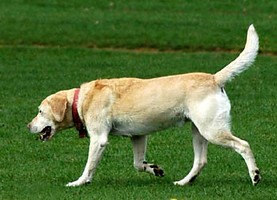
A Golden Labrador Retriever © 2005 copyright-free-photos.org.uk
Below is a list compiling the most popular dogs in the USA in 2005.
All data was acquired from http://www.akc.org/reg/dogreg_stats.cfm
Behaviour
General behaviours:
Social organization:
Three types of social structure can be found among the different species of Canidae (Fox 1978).
Type I (e.g., red fox)
Type II (e.g., coyote)
Type III (e.g., gray wolf)
Behaviors associated with pack formation
Several behavioral differences are associated with canids, which may be categorized by whether they form packs:
pack-forming canids:
solitary canids:
Behavioral attributes that favor domestication
Several behaviours are relevant to domesticating nonhuman animals:
Behaviour of Canis lupus (gray wolf)
Behaviour of domestic dogs
Communication
Dogs have four main ways of communicating with each other or humans:
1) Scent marking
Spraying or urinating on objects is a method used by dogs to communicate. It serves to mark territory and to give information – such as the sex of the animal and its mating status. Dogs mark territory to avoid confrontation. Depending on how secure a dog feels about its territory, it will tend to spray more or less often. For example, if a dog is very unsure about its security, it likely will mark the territory more frequently; if this is a domestic dog, then the marking will extend to objects inside the house – the beds, clothing, even visitors. Dogs also will urinate when they smell the urine of another dog (Lanier 2000).
2) Visual cues
Dogs will use a variety of body postures to indicate how they will act in certain contexts.
Aggressive intent (Horwitz, 2001):
Submissive intent (passive or active) (Horwitz, 2001):
3) Vocal communication
3.1 The Vocal Tract:
Sound reproduction is similar in all mammals. Primary sound is produced by the vocal folds of the larynx and then is oscillated by the exhalation of air from the lungs. To modify airflow, the vocal folds can be opened and closed, which produces acoustics that vary with time (Riede and Fitch, 1999). The resonances of the vocal tract produce what are known as “formants,” a phenomenon that has been studied heavily in speech science (Riede and Fitch, 1999).
Although dogs lack the structure found in the modern human vocal tract, modifications that allow us to produce vowels, dogs are capable of distinguishing among the different formants produced by humans (Riede and Fitch, 1999). This knowledge caused scientists to wonder if animals could distinguish formants within their species, and if it possibly could be used as a form of communicating size between dogs.
Researchers have found that vocal tract length is related directly to the body size of the individual producing the sound, which results in a change in frequency in low-pitched growls. These growls convey an accurate impression of size to the listener.
3.2 Barking:
For a long time, barking was thought to have no communicative role. Dog barking usually is highly variable. In wild canines, only puppies bark consistently and, upon reaching adult hood, barking is restricted to specific contexts. Excessive and repetitive barking in adult dogs has no relevant communicative properties and is a result of relaxed selection during the 12000 years of domestication that have transpired (Riede and Fitch, 1999).
In a recent paper by Pongracz et al. (2005), however, barking has been shown to have a role in interspecific communication between dogs and humans.
Two rules for the foundations of interspecific communication:
To test the theory that dog barking does serve as a form of interspecific communication with humans, scientists used the Mudi – a midsized Hungarian sheepdog that is highly intelligent and utilizes a large amount of barking while herding.
They made several sound recordings of the dog in multiple situations:
These barks (72 in total, 12 from each situation) were shuffled and played for three groups of people. The human participants were grouped depending on their experience with dogs – whether they owned Mudis, had owned a dog but never a Mudi, and, finally, never owned a dog.
The human participants had to fill out two questionnaires: 1) rating the emotionality of each bark heard from aggressiveness to happiness and 2) attempting to categorize the situation occurring at the time of the barking using the list above
4) Social communication
Even more so than do our nearest primate relatives, dogs have an unusual ability to understand human social and communicative behaviors. They
FACT: With respect to gaze cues, dogs – like human infants but unlike chimpanzees – only use the human head and eye direction to locate hidden food if the person is gazing at one of two possible hiding locations; they ignore a human’s gaze if the person stares into space above the correct hiding location” (Hare and Tomasello, 2005).
Are the similarities between dogs and humans in terms of social interaction a case for convergent evolution?
The ability of dogs to understand human social and communicative behaviors evolved during the process of domestication and represents a case for convergent evolution. The behaviour possibly is an incidental side-effect of selection in dogs for tame behaviour (Hare and Tomasello, 2005).
The Dog Genome
Sequencing the genome
Who sequenced it?
Picking the correct subject
Method for Sequencing
they used a 7.6x WGS (whole genome shotgun) strategy
Results
Importance of the Genome
Man's Best Friend, Why?

MAC, a Bichon Frise, at play. © 2003 Alex McDougall
Domesticated animals abound. Over the millennia humans have, for a variety of reasons, domesticated everything from cats and dogs to snakes and skunks. But none of them receive the attention, care, and love that dogs do. Why is this? What makes dogs man's best friend? Is it their ease of training, the attachment they make to their human companions, or do they just really like free food?

Tucker, a West Highland Terrier, up to no good. © 2006 Christine McDougall
The answer seems to lie in the long relationship between the two species. Researchers estimate the history of humans and dogs coexisting as far back as 15000 years. In this time, dogs and humans have had a long time to get to know one another. Studies in which researchers looked at the abilities of wolves, chimpanzees, and domesticated dogs to recognize human communication skills found that domesticated dogs, even those as young as nine weeks old, were better able than were wolves or chimpanzees to understand cues from human subjects. The subjects, all raised by humans, each were given instructions by humans on the location of hidden food and, despite the fact that chimps are more closely related genetically to humans and wolves have bigger brains, dogs still came out on top. The study revealed that the co-evolution of dogs with humans must have selected for a set of cognitive abilities between the two that makes the bond between humans and dogs unique (Walton, 2002). This unique ability to communicate eases the relationship between dogs and humans and lends insight into why both dogs and humans feel a special connection to one another.
Throughout the process of domestication, dogs have been of utmost use to humans, as workers and companions. In the Stone Age, dogs helped in hunting, labour, providing warmth, and protecting from predation. Often, the remains of dogs are found with the remains of Stone Age humans, in and around caves and in burial grounds (Vergano, 2006). Aside from pets, dogs the world over still work in a symbiotic relationship with humans.

Della, a Mixed Breed dog, at play © 2005 Alex McDougall
True stories of Man's Best Friend
Countless news stories chronicling the bond between dogs and humans have been published. In 2005, a baby in Kenya was abandoned by her mother in a forest and left to die. A stray dog, a new mother of her own litter of puppies, heard the cries from the human baby that no one else heard and took the dying human infant back to her own litter of puppies and cared for her as best she could, treating her like one of her own pups. When a local man heard a baby crying, he was led to find a human baby snuggling with puppies, watched over by their faithful mother. The baby was taken to a hospital and is now growing up a healthy baby girl, thanks to a stray mother dog (Reagan, 2005). This begs the question, ‘How deep is the tie between humans, and their best friends?’ Did the dog know instinctively to take care of a human baby, despite the fact that she was a stray who may have had little human contact? These are the types of questions that researchers are trying to answer.
One study found that having a dog as a companion lowered blood pressure in patients in high stress jobs. Other studies showed that having a dog as a pet was a great substitute for human companionship for those who lived alone (Biology.About.Com, 1999).
Dogs have been shown to reduce stress and anxiety in hospitalized patients. Researchers showed that just a 12 minute visit with humans’ best friend reduced stress-inducing hormone emissions and lowered blood pressure and pulse rate in hospital patients (AHASS, 2005).
Dogs In Society
Many dogs are used in professional applications, working in symbiotic relationships with their human counterparts to do everything from fight crime to guiding the blind.
Guide dogs
Guide dogs, commonly called ‘seeing eye’ dogs are paired with visually impaired people to add to their abilities to move about safely. The term seeing eye dog comes from the first guide dog training school, opened in America in 1929. The first ever guide dogs were trained as part of a program run by the German government to aid veterans who were blind or visually impaired. The seeing eye dog school, and most other schools, use golden retrievers, labradors, and German shepherds, as they have the best temperament for the work (SeeingEye.org, 2006).
Police dogs, drug dogs and airport security
Police dogs, sometimes referred to as the ‘K9 units’ (a play on the word canine), are dogs specially trained to assist in police-related matters. This can include anything from drug location to suspect location and restraint. Most police dogs live with their human coworkers and enjoy the same protection and respect that human police officers do. Often K9’s are given bullet proof vests, and, in many places, laws have been passed making it illegal to try to hurt a police dog (Grabianowski, 2006).
Search and rescue dogs and fire dogs
Many dogs are employed on emergency search and rescue teams. These dogs are trained specially to search out and find people who may be trapped due to hurricanes, earthquakes, avalanches, or some other disaster. Their superior sense of smell and quickness on their feet enables them to do this much more quickly than can their human counterparts.
Sheep dogs, sled dogs and guard dogs
Dogs also serve many purposes in the everyday lives of some people. For many centuries, dogs have been used to herd sheep, pull sleds through the snow, and guard homes and properties.
Astronauts
Dogs even receive credit as the first living organism in outer space. Laika, a dog from Russia, was launched on the Soviet satellite Sputnik 2, on November 2nd, 1957. Since then, many other dogs have taken part in manned and non-manned missions to space to collect scientific data (Miffline, 2006).
Research
Dogs, as they are physiologically similar to humans, are also often used to help scientists understand certain human behaviors. The Russian scientist, Ivan Pavlov, based his theory of classical conditioning on work with dogs. He rang a bell every time he was going to feed the dogs and noted that, in response to this, the dogs learnt that food was coming every time the bell rang. As the dogs’ reactions to eating were to salivate, the bell alone was able to induce salivation. This principle relates to humans in many instances. Advertisements jingles or songs for different types of foods may make you hungry or desire the product advertised subconsciously.
Quiz
Commemoration
This page is in memory of Heather Watson, our beloved classmate and friend, who died suddenly in an accident at the age of 19. Heather loved all animals, especially her golden retreiver, Macey (pictured below). Heather spent her spare time working at a veterinary clinic and at the local dog obedience club. Heather will be missed dearly.
Information on the Internet
- American Kennel Club List of Dog Breeds, Breeders, and Owners.
- K9 Magazine Online British Dog Magazine.
- The Canadian Association of Proffesional Pet Dog Trainers Listing of Canadian Dog Trainers, and information on dog training.
- The Seeing Eye North American Guide Dog Training School.
- Healthy Pet.com The American Animal Hospital Association (AAHA). Includes listings of veterinarians throughout North America.


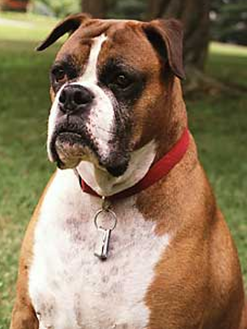


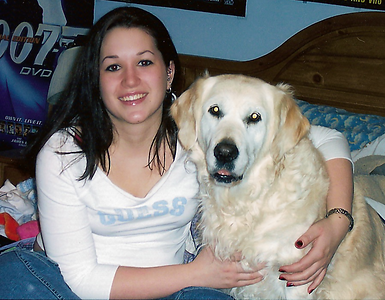



 Go to quick links
Go to quick search
Go to navigation for this section of the ToL site
Go to detailed links for the ToL site
Go to quick links
Go to quick search
Go to navigation for this section of the ToL site
Go to detailed links for the ToL site